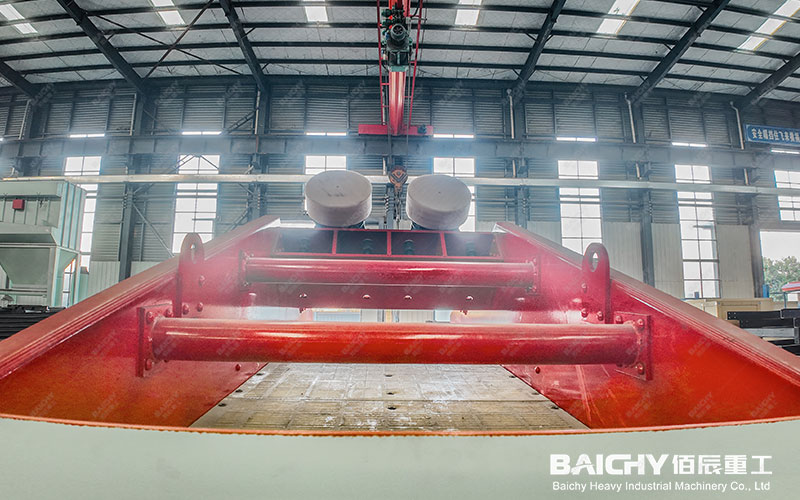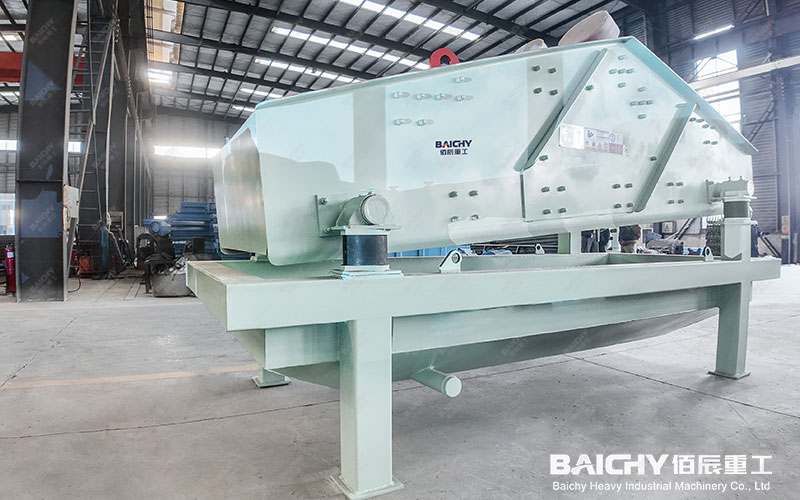
In today's mining operations, tailings management is no longer a simple "end-of-pipe treatment," but a core element concerning project feasibility, economic benefits, and environmental responsibility. Traditional wet tailings dams not only occupy large amounts of land and pose a risk of dam failure, but also carry long-term threats to surrounding water bodies and soil. Therefore, achieving effective tailings dewatering and minimizing environmental impact has become a challenge and opportunity that modern mines must face.
I. Why is tailings dewatering crucial?
Tailings dewatering is not merely "removing water"; it is a strategic process that brings multiple benefits:
1. Significantly improved safety: By removing large amounts of water, transforming fluid tailings into a solid or semi-solid paste, the catastrophic risk of tailings dam failure can be fundamentally eliminated.
2. Reduced environmental impact: It significantly reduces the risk of heavy metals and chemicals in tailings contaminating groundwater and surface water through leachate. Dry-piled tailings are also easier to reclaim and restore vegetation.
3. Water Conservation: Up to 80%-95% of the water recovered during dewatering can be recycled for mineral processing, which is especially important in water-scarce areas, reducing freshwater consumption.
4. Reduced Long-Term Costs: Although dewatering equipment requires initial investment, it reduces the construction and maintenance costs of tailings ponds and lowers long-term monitoring and liability costs after mine closure.
II. Core Tailings Dewatering Technologies and Processes
Effective tailings dewatering is a multi-step process, typically involving the following key technologies and equipment:
1. Preliminary Concentration:
• Technology: Uses a high-efficiency thickener or a deep cone thickener.
• Function: Through gravity settling and the action of flocculants, low-concentration tailings slurry (typically containing 15%-30% solids) is concentrated into high-concentration underflow slurry (containing up to 50%-70% solids), preparing for subsequent deep dewatering. This is the foundation of the dewatering process.
2. Deep Dewatering:
This is a crucial step in achieving "dry stacking" or "paste discharge." Key technologies include:
• Filter Dewatering:
◦ Vacuum Filters: Such as disc filters and drum filters, suitable for tailings with fine particle size but general filterability, producing filter cakes with a solids content of 80%-85%.
◦ Filter Presses (Core Recommendation): Especially plate and frame filter presses and chamber filter presses, which can generate extremely high pressure, are highly effective for very fine particles and difficult-to-filter tailings, producing hard filter cakes with a solids content of over 85%. This is one of the most reliable technologies for achieving dry stacking.
• Centrifuge Dewatering:
◦ Technology: Using a horizontal screw centrifuge, centrifugal force is used to separate solids and liquids.
◦ Features: High throughput, continuous operation, suitable for medium-sized tailings, producing mud cakes with a solids content of 75%-85%.
III. Beyond Dewatering: How to Systematically Reduce Environmental Impact?
Dehydration is a means to achieve environmental goals, but true sustainability requires a systematic approach:
1. Adopting "dry tailings storage" technology:
The dry filter cake formed after deep dehydration is transported to a specially designed storage site, where it is layered, stacked, and compacted. This method significantly reduces land occupation, avoids the risk of water pollution, and facilitates subsequent land reclamation.
2. Promoting the "paste disposal" method:
Tailings are dehydrated to a paste-like state (75%-85% solids content) without water separation, and then pumped to the storage site via pipelines. The paste maintains a stable slope on the storage site, is not easily flowable, and also improves safety and reduces the amount of water that needs to be managed.
3. Water recycling and closed-loop management:
Establish a complete water recycling system to collect all clarified water generated during the dehydration process and reuse it in the production process, achieving "zero" or near-zero wastewater discharge.
4. Mine closure planning and ecological reclamation:
The land use after mine closure is planned from the initial stage of mine design. Tailings ponds that have been dewatered and dried can be covered with soil, revegetated, and even converted into agricultural, forestry, or recreational land, minimizing the environmental impact of mining.
IV. Key Considerations for Choosing a Suitable Dewatering Solution
There is no single best solution. The following factors must be considered when making a selection:
• Tailings characteristics: Particle size distribution, mineral composition, pH, etc.
• Climatic conditions: Precipitation, evaporation, freezing period.
• Site conditions: Topography, earthquake risk, distance from residential areas.
• Economic viability: Initial investment, operating costs, long-term liability costs.
Effective dewatering of mine tailings and reducing environmental impact is a comprehensive strategy integrating technological innovation, environmental management, and economic benefits. By adopting advanced dewatering technologies (such as high-efficiency thickening combined with pressure filtration) and implementing sustainable practices such as dry stockpiling, water recycling, and ecological restoration, mining companies can not only significantly improve operational safety and compliance but also cultivate a responsible industry image and achieve harmonious coexistence with the environment. Evaluate your tailings management process now and move toward a safer, greener, and more resilient future.










